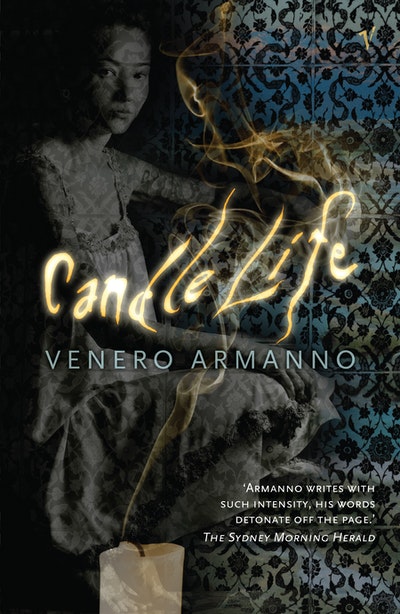
- Free Article: No
- Contents Category: Fiction
- Review Article: Yes
- Article Title: Shadowland
- Online Only: No
- Custom Highlight Text:
Deep under the streets of Paris, the tunnels, chambers and galleries of the catacombs run in all directions, some of them filled with the skeletons of the dead who were displaced in the eighteenth century from the overflowing cemeteries of Paris and moved here, their bones stacked six feet high and six feet deep along the walls. During World War II, the chambers and tunnels were used by the French Resistance and also by the Nazis. These days, tourists queue peacefully to totter down the delicate, steep, spindly steps into the underworld darkness, nervously following the guides through what feels like miles of tunnels. The mystery of the dripping noise is solved when you come back up into the sunlight to find your clothes streaked with the dissolving lime of the underworld.
- Book 1 Title: Candle Life
- Book 1 Biblio: Vintage, $32.95 pb, 368 pp
- Book 1 Cover Small (400 x 600):

- Book 1 Cover (800 x 1200):

The Paris catacombs are an artist’s dream, awash with suggestion and sensation. In Candle Life, Venero Armanno uses this shadow-land as a sweeping, dramatic metaphor for memory, struggle and death. The unnamed narrator of this story is Australian, living and working in a place called the Commune des Arts. He has a small room in the ugly building, but his view of Paris is panoramic, and on the table there’s a giant candle-wax sculpture of sorts, made from the melted drippings of many former candles by former residents. As well as this candle-wax volcano on his table, he also has ice at his heart: the original plan was a joint arts residency with his Japanese-Australian lover Yukiko, but she has been killed in a freak accident back in Australia, and the bereaved narrator has decided to come to Paris anyway, alone.
What starts out as an individual tale of lost love and artistic striving in Paris, almost as a modern-day La bohème, quickly broadens into a story about history, memory and loss. The year must be 2005, for early in the novel the narrator finds himself in a crowd celebrating the sixtieth anniversary of the end of World War II.
Also quite early in the story, he begins to be surrounded with a cast of larger-than-life characters. This novel works on a number of different (and sometimes discontinuous) allegorical or metaphorical levels, and one of them seems to be the figure of the artist striving to make sense of the characters by whom he is surrounded, and striving to tell, or to hear, their stories.
There’s the globetrotting gay French chef and his niece, the charming Emilie; there’s the Russian prostitute who does not speak, and the cheapskate Spanish restaurateur who fatally fails to put a safety switch in his fuse box. More centrally, there is the huge, battered, Black-Cuban-American beggar Sonny Lee, who develops from being a nuisance into friend, landlord and finally an unlikely father-figure and guide, the psychopomp who leads the narrator down into his last hallucinatory journey through the catacombs. The last thirty pages of this book are a surreal nightmare of great claustrophobia and intensity, as so much of the history of Paris has been.
The obvious comparison is with Christos Tsiolkas’s Dead Europe (2005), which this novel resembles closely in some ways and in other ways not at all. Both novelists are Australians of European background and of similar age, and both see the dark side of contemporary Europe. But Candle Life is by no means the savage nightmare vision of black negativity that caused such a violent critical reaction to Dead Europe, nor could it – unlike the latter – possibly be read as in any way anti-Semitic; its politics in this respect, and about race in general, are unequivocal.
As much of Armanno’s previous work has also been, this novel is informed by classical mythology: the underworld journey and its weird experiences combine elements from the stories of Aeneas and of Orpheus, the artist who descended into hell to bring his dead lover Eurydice back to life. Armanno is far too good a writer to draw neat parallels, but these stories are useful and enriching if you know them. It’s deeply tempting to read the novel psychoanalytically: to see the catacombs as an image of the subconscious, into whose depths the artist is required to go for material, and often to bring back stuff that is by no means pretty.
Most of all, the novel is an overwhelmed response to exhausted, ancient Europe: Paris, like Vienna, is a city in which you cannot walk three steps without being reminded in some way of the savage history of World War II, which haunts this novel. Perhaps it’s the chaos of that war and the complexity of its consequences that make this novel, for all its virtuoso writing and visionary moments, still seem a bit less focused and more crowded than it needs to be.


Comments powered by CComment